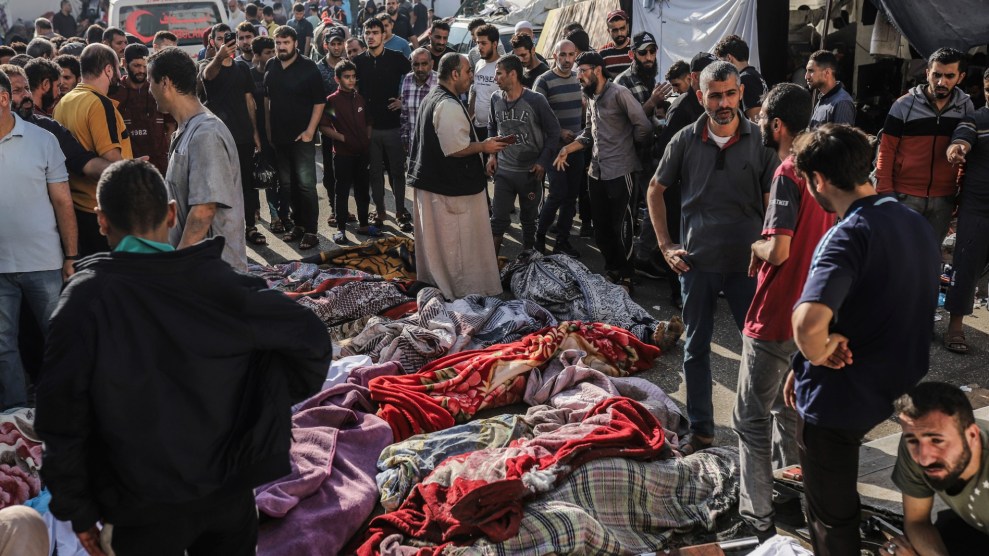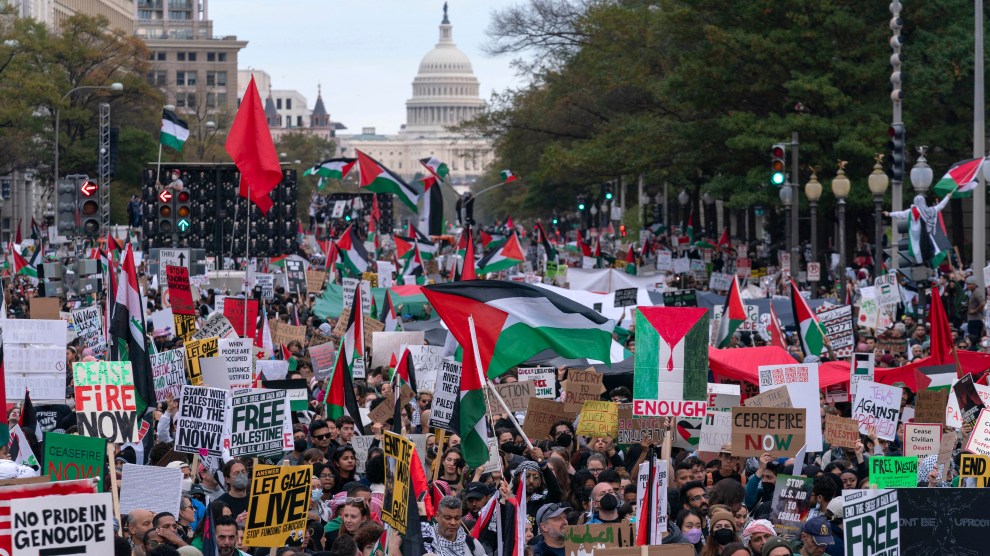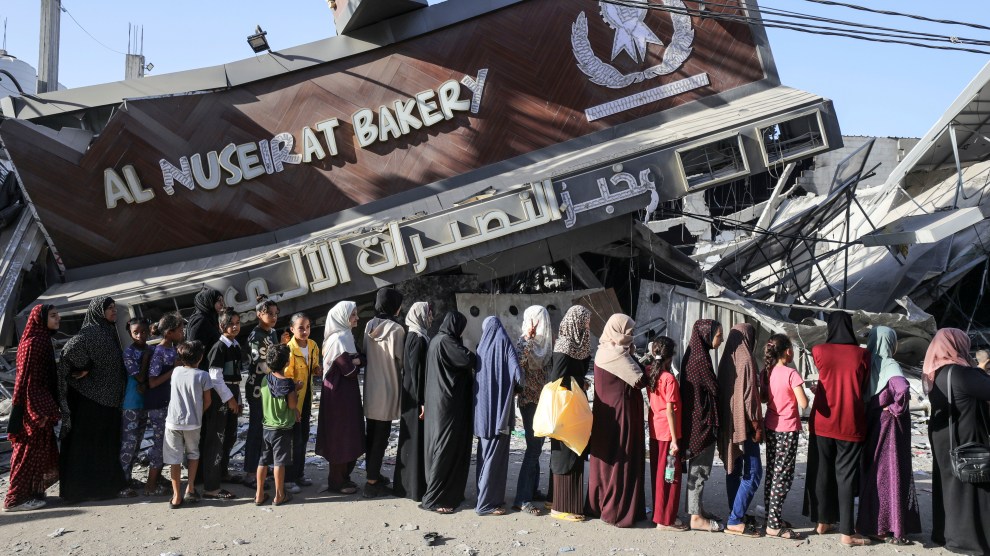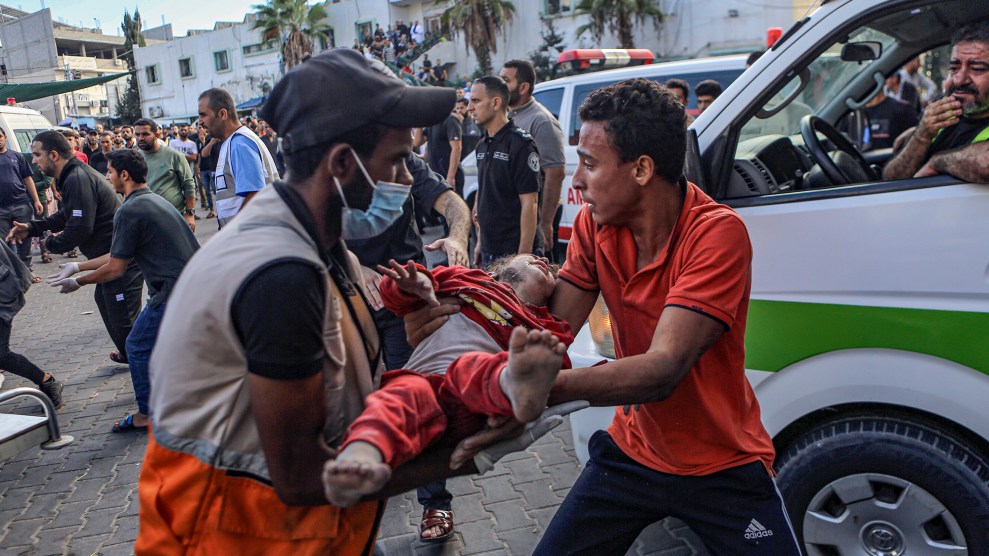
Palestinians inspect the bodies of victims who were killed in Israeli bombardment as they lie outside Al-Shifa hospital. Mohammad Abu Elsebah/dpa/AP
As Israel continues its ground invasion of Gaza City and calls for a ceasefire mount on the sixth week of the war, hospitals are being pushed to the brink of collapse. On Sunday, the Palestine Red Crescent Society said one of the main hospitals in northern Gaza, the Al-Quds, was “out of service and no longer operational” as a result of power and fuel shortages. “Medical staff are making every effort to provide care to patients and the wounded, even resorting to conventional medical methods amid dire humanitarian conditions and a shortage of medical supplies, food, and water,” the organization’s statement reads, adding that the facility had been “left to fend for itself under ongoing Israeli bombardment, posing severe risks to the medical staff, patients, and displaced civilians.”
Speaking to CNN’s Dana Bash on Sunday, Israel’s Prime Minister Benjamin Netanyahu said Israel had “designated routes to a safe zone south of Gaza City.” The Israel Defense Forces have stated they opened up passages from three hospitals in northern Gaza for civilians to evacuate, but the International Committee of the Red Cross couldn’t confirm that evacuations were taking place. “I think any civilian loss is a tragedy and the blame should be placed squarely on Hamas,” Netanyahu said.
Thousands of people displaced by strikes have been seeking shelter in hospitals, which Israeli officials claim Hamas militants are using as a shield for its military operations. Since the October 7 deadly Hamas attack that killed about 1,200 Israeli civilians and resulted in more than 200 hostages, almost 1.6 million people have been internally displaced in the Gaza Strip and Gaza officials estimate the death toll has reached 11,000. When asked if he would take responsibility for failing to prevent the Hamas attack, Netanyahu told CNN that this “question will be addressed after the war.”
Earlier this week, Tedros Adhanom Ghebreyesus, director-general of the World Health Organization (WHO), said Gaza’s “health system is on its knees,” explaining that half of the 36 hospitals in the Gaza Strip and two-thirds of primary healthcare facilities were not functioning.
On Sunday, the WHO said it had lost communications with their contacts at Gaza’s largest hospital, Al-Shifa. “Over the past 48 hours, Al-Shifa Hospital—which is the largest medical complex in Gaza—has been reportedly attacked multiple times, leaving several people dead and many others injured,” the organization said in a statement. “The intensive care unit suffered damage from bombardment, while areas of the hospital where displaced people were sheltering have also been damaged. An intubated patient reportedly died when electricity was at one point cut.”
A doctor at Al-Shifa told CBS’s Marwan Al-Ghoul that there were over 100 unburied dead bodies inside the hospital:
A doctor at Gaza’s Shifa hospital says the smell of death is everywhere; there’s over 100 dead bodies in the hospital and nowhere to bury them pic.twitter.com/R7wHQY3Rjb
— Sarah Wilkinson (@swilkinsonbc) November 12, 2023
Amidst the worsening humanitarian crisis, Netanyahu has rejected increased international calls for a ceasefire without the release of all hostages. This weekend, hundreds of thousands of protesters rallied in London to protest Israel’s military assault on Gaza.
















